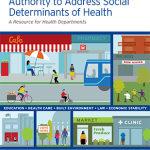Structure of Government
A Public Health Law Academy training
All levels of government — federal, state, and local — have a role in protecting the public’s health.
However, state-to-state differences can be confusing, and some powers and authorities are not clearly spelled out for every situation. Also, the responsibilities of different government agencies might overlap when it comes to addressing public health issues.
How do different levels of government work together when their responsibilities often overlap? What is the basis for executive orders? What is the difference between a local health department and a local board of health?
This training addresses these questions and explores how different levels of government can collaborate to achieve shared public health goals. It incorporates stories from the field and demonstrates how the powers and authorities of different government agencies play out in everyday practice. For a preview of the material covered in this training, watch this video short about types of laws and this video short about the structure and functions of government.
After completing this training, you will be able to
- describe how a balance of powers is maintained between the three branches of government;
- identify the various types of laws that different branches of government can create; and
- explain why intergovernmental collaboration is important for achieving improved health outcomes
If you are a TRAIN user, please register through TRAIN. To learn more about earning the Public Health Law Academy Certificate of completion, see the complete training plan.
After viewing the training, please consider sharing your feedback.

